Welcome to Cheongju! From ancient fortresses to contemporary art galleries, there’s a plethora of things to do in Cheongju that cater to different types of visitors. Located just a couple of hours from Seoul, Cheongju serves as the capital of North Chungcheong Province. Its central location makes it a convenient destination for those looking to explore the Korean countryside without straying too far from the capital. The city is also known for its significant contributions to Korean culture and technology, being the birthplace of the world’s oldest existing metal-printed book.
source: VisitKorea on YouTube
Why Visit Cheongju?
- Historical Significance: Discover ancient temples, fortresses, and museums that narrate Korea’s rich past.
- Cultural Experiences: Engage with local arts, crafts, and festivals unique to the region.
- Natural Beauty: Enjoy scenic parks, hiking trails, and the serene Musimcheon Stream that flows through the city.
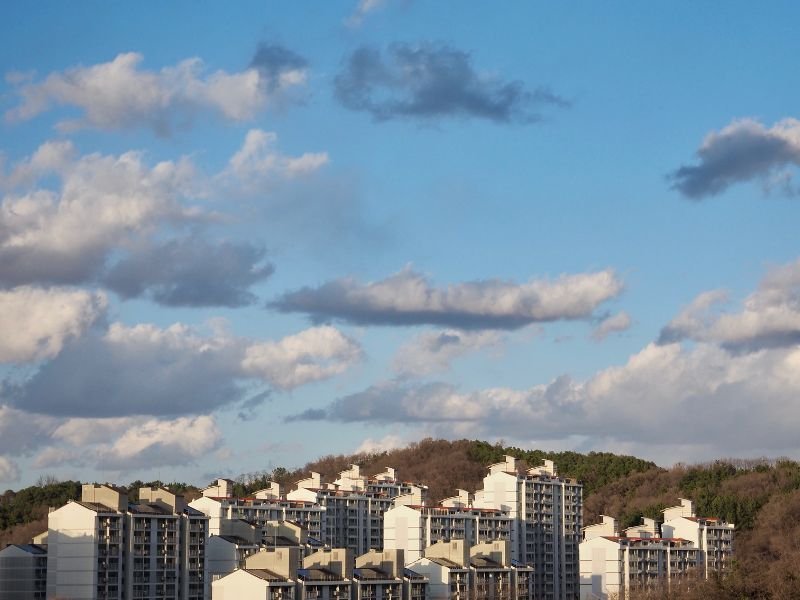
Tip: The best times to visit Cheongju are during spring (April to June) and autumn (September to November) when the weather is pleasant, and the landscapes are especially picturesque!
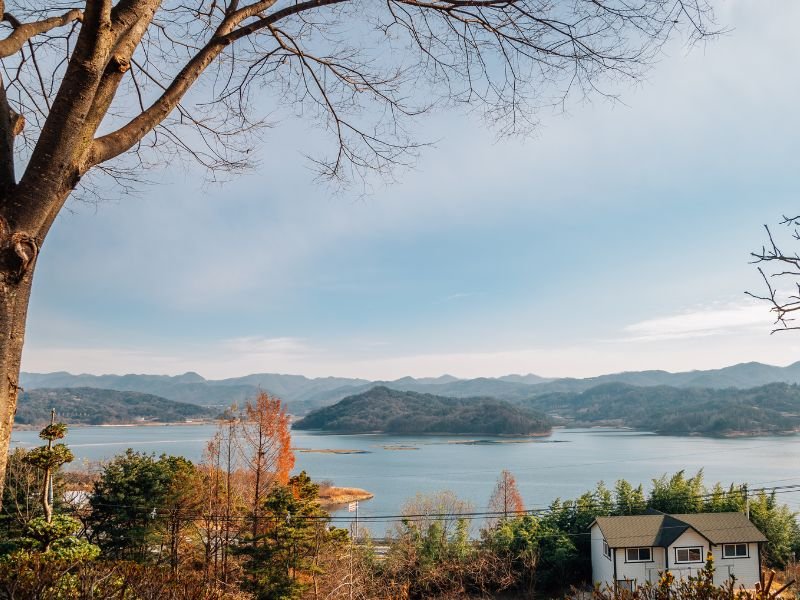
Top 10 Things To Do in Cheongju, Korea For Visitors
1. Explore the Cheongju Early Printing Museum
Dive deep into the annals of history at the Cheongju Early Printing Museum, a site that stands as a testament to Korea’s pioneering role in the world of printing. The museum is built on the historical grounds of the Heungdeoksa Temple, where the Jikji, the world’s oldest existing metal-printed book, was printed in 1377—predating Gutenberg’s Bible by 78 years.
As you enter the museum, you’re greeted by a life-sized replica of the Jikji, along with interactive displays that showcase the evolution of printing technology. Exhibits feature ancient movable metal type, woodblock prints, and traditional paper-making processes. Detailed dioramas depict scenes of monks meticulously carving woodblocks and setting metal type, bringing the history to life.
- Historical Artifacts: View original printing presses, ancient manuscripts, and replicas of the Jikji, offering a tangible connection to the past.
- Interactive Exhibits: Engage with hands-on displays where you can try your hand at setting type or making traditional Korean paper (hanji).
- Cultural Insight: Learn about Korea’s significant contributions to global knowledge dissemination and how the printing revolution shaped societies.
Tip: Participate in the museum’s printing workshop, where you can create your own print using traditional methods. It’s not only educational but also a unique souvenir to take home! Be sure to check the schedule ahead of time as workshops may require prior booking.
2. Visit Sangdang Sanseong Fortress
Perched majestically on the slopes of Uamsan Mountain, the Sangdang Sanseong Fortress is a must-visit for history enthusiasts and nature lovers alike. Constructed during the early Joseon Dynasty in the 14th century, this mountain fortress served as a military stronghold to protect the region from invasions.
The fortress walls stretch over 4.2 kilometers, encompassing an area rich with forests, streams, and wildlife. As you hike along the well-preserved stone walls, you’ll pass through ancient gates like the East Gate (Dongmun) and South Gate (Nammun), each offering panoramic views of Cheongju and the surrounding countryside. Informational plaques provide historical context, detailing the fortress’s strategic importance and architectural features.
- Scenic Hikes: Choose from several trails of varying difficulty, winding through pine forests and offering opportunities to spot local flora and fauna.
- Historical Exploration: Discover artifacts and restored buildings within the fortress, including command posts and watchtowers that provide insight into military life centuries ago.
- Photography Opportunities: Capture stunning vistas of the city skyline juxtaposed against rolling hills, especially beautiful during sunrise and sunset.
Tip: Wear comfortable hiking shoes and bring plenty of water, especially during warmer months. Early morning or late afternoon visits not only offer cooler temperatures but also the best lighting conditions for photography enthusiasts!
3. Stroll Through Cheongju Art Studio
Immerse yourself in the vibrant contemporary art scene at the Cheongju Art Studio, a creative haven situated in the renovated Cheongju Tobacco Manufacturing Factory. This industrial complex, once a hub of tobacco production, has been transformed into a dynamic space fostering artistic innovation and cultural exchange.
The studio hosts 30 resident artists annually, providing them with workspace and a platform to showcase their creations. As you navigate the expansive halls, you’ll encounter a diverse array of art forms, including painting, sculpture, installation, and multimedia works. The raw, industrial aesthetic of the building adds a unique backdrop to the cutting-edge art on display.
- Contemporary Art Exhibitions: Experience rotating exhibits featuring both emerging and established artists, offering fresh perspectives on modern issues.
- Artist Interactions: During open studio events, engage in meaningful conversations with artists, gaining insight into their creative processes and inspirations.
- Unique Venue: Appreciate the harmonious blend of historical architecture and avant-garde art, symbolizing the city’s evolution.
Tip: Visit the on-site café, which often features live music or poetry readings. It’s a perfect spot to relax and reflect on the art you’ve encountered. Check the studio’s event calendar online for special exhibitions, workshops, and performances that may coincide with your visit!
4. Explore the Cheongju National Museum
The Cheongju National Museum serves as a cultural repository, housing artifacts that chronicle the rich tapestry of Korea’s history from prehistoric times to the modern era. The museum’s permanent exhibitions are meticulously organized into galleries focusing on archaeology, fine arts, folklore, and special themes.
Highlights include exquisite celadon pottery from the Goryeo Dynasty, intricate bronze mirrors and jewelry from ancient burial sites, and stunning Buddhist sculptures that reflect the spiritual heritage of the region. Interactive displays and multimedia presentations make the learning experience engaging for visitors of all ages.
- Cultural Richness: Delve into over 100,000 artifacts, each telling a story of Korea’s past civilizations, traditions, and artistic achievements.
- Educational Programs: Participate in lectures, hands-on workshops, and guided tours led by experts who provide deeper insights into the exhibits.
- Peaceful Surroundings: The museum is set within beautifully landscaped gardens and features an outdoor sculpture park, perfect for a leisurely stroll.
Tip: Admission is free for the permanent exhibitions. Allocate at least half a day to fully appreciate the vast collections. The museum shop offers unique souvenirs, including replicas of artifacts and traditional crafts, making for meaningful keepsakes!
5. Visit Cheongnamdae Presidential Villa
Nestled on the shores of Daecheong Lake, the Cheongnamdae Presidential Villa was once a private retreat for South Korea’s presidents, earning the nickname “Cheongwadae in the south” (Cheongwadae being the presidential residence in Seoul). Opened to the public in 2003, the villa offers a rare glimpse into the lives of the nation’s leaders.
The estate spans over 560,000 square meters, featuring beautifully manicured gardens, walking trails, and several buildings including the main residence, guesthouses, and a chapel. Inside, you’ll find personal artifacts, photographs, and state gifts that reflect the history and diplomacy of past presidencies.
- Historical Insight: Explore rooms preserved with original furnishings, providing an intimate look at presidential lifestyles and South Korea’s political history.
- Natural Beauty: Wander through themed gardens like the Rose Garden, Wildflower Garden, and Bamboo Grove, each offering tranquil spots to unwind.
- Leisure Activities: Enjoy panoramic views of Daecheong Lake from observation decks, or relax at the lakeside café offering refreshments with a view.
Tip: Advance reservations are required due to security protocols. You can book online or through the visitor center. Don’t forget to bring a valid ID for verification upon entry. Photography inside certain areas may be restricted, so be sure to adhere to guidelines!
6. Wander Around Suamgol Village
Perched on a hillside overlooking Cheongju, Suamgol Village is a testament to community spirit and artistic rejuvenation. Once facing decline, this neighborhood was revitalized through a public art project that transformed its streets into a living canvas. The village gained fame after being featured in several Korean dramas, attracting visitors eager to experience its charm.
As you meander through narrow alleyways, you’ll encounter over 50 vibrant murals depicting whimsical scenes, traditional motifs, and local stories. From a giant cat lounging on a wall to interactive 3D paintings that invite you to become part of the art, every corner offers a delightful surprise.
- Artistic Atmosphere: Admire the creativity and diversity of murals, each crafted by local artists and residents, reflecting the village’s identity.
- Cultural Experience: Get a glimpse into traditional Korean village life, with hanok-style houses and residents going about their daily routines.
- Local Delights: Visit quaint cafés serving specialty coffees and homemade desserts, and browse artisan shops selling handmade crafts and souvenirs.
Tip: The village is situated on steep terrain, so wear comfortable shoes. Early mornings or weekdays offer a quieter experience, allowing you to take photos without crowds. Be respectful of residents’ privacy, as this is a living community!
7. Relax at Daecheong Lake
A jewel of natural beauty, Daecheong Lake is a vast reservoir formed by the Daecheong Dam on the Geum River. Spanning 80 kilometers in length and surrounded by rolling hills and forests, the lake is a haven for outdoor enthusiasts and those seeking tranquility.
The area offers a multitude of activities:
- Outdoor Activities: Rent a kayak or paddleboat to explore the serene waters, go fishing for local species like carp and trout, or hike along well-marked trails that offer varying levels of difficulty.
- Scenic Beauty: Visit observation points such as Munui Cultural Properties Site or the Water Culture Center for panoramic views. The lake is especially stunning during autumn when the foliage transforms into vibrant hues.
- Cultural Sites: Explore nearby temples like Jeongbuksa and Chojeong Haenggung, each offering historical significance and peaceful surroundings.
Tip: Pack a picnic basket and set up at one of the designated areas along the lakeshore. Local convenience stores offer ready-made kimbap and snacks if you prefer something quick. Be mindful of preserving the natural environment by disposing of trash properly!
8. Explore Heungdeok Temple Site
Adjacent to the Early Printing Museum lies the Heungdeok Temple Site, a historical and spiritual landmark. While the original temple no longer stands, the site has been thoughtfully developed into a cultural park that honors its legacy.
Walking through the park, you’ll find:
- Reconstructed Pagodas: The Iron Flagpole and Stone Lantern have been restored, symbolizing the temple’s former grandeur.
- Informational Displays: Bilingual signs provide historical context about the temple’s significance in Buddhism and its role in the development of printing.
- Serene Environment: The landscaped gardens feature ponds with lotus flowers, stone pathways, and shaded seating areas perfect for meditation or quiet reflection.
Tip: The site is especially enchanting during the annual Cheongju Jikji Festival, held in September, celebrating the heritage of printing and offering cultural performances, exhibitions, and hands-on activities. Plan your visit accordingly to partake in the festivities!
9. Visit Uam Historical Park
Dedicated to the esteemed scholar Song Si-yeol (pen name Uam), the Uam Historical Park provides an immersive journey into the intellectual legacy of the Joseon Dynasty. Song Si-yeol was a prominent Confucian scholar, philosopher, and politician whose works greatly influenced Korean thought.
The park encompasses:
- Reconstructed Residence: Explore Uam House, a traditional hanok that showcases authentic architectural elements, including wooden beams, clay-tiled roofs, and paper windows.
- Exhibition Hall: View artifacts such as handwritten manuscripts, personal belongings, and portraits that shed light on Song Si-yeol’s life and contributions.
- Beautiful Gardens: The meticulously maintained grounds feature ponds, stone bridges, and pathways lined with flowering plants, creating a tranquil atmosphere.
Tip: Engage in cultural programs like calligraphy classes, tea ceremonies, or Confucian lectures offered at the park. These activities provide deeper appreciation and hands-on experiences of traditional Korean culture. Check the schedule in advance, as some programs may require reservations!
10. Shop and Dine at Chungbuk Provincial Office Street
Experience the pulse of modern Cheongju at the bustling Chungbuk Provincial Office Street. This vibrant district is a melting pot of commerce, cuisine, and entertainment, reflecting the city’s contemporary lifestyle.
Key attractions include:
- Shopping Spree: From international brands in department stores to unique finds in boutiques and street markets, shoppers can indulge in fashion, electronics, cosmetics, and more.
- Culinary Exploration: Savor a gastronomic journey with a plethora of dining options. Try hanjeongsik (traditional Korean set meals), international cuisines, or trendy cafés specializing in desserts like bingsu (shaved ice).
- Entertainment: The area comes alive at night with karaoke bars, arcades, cinemas, and live street performances. It’s a hotspot for locals and tourists seeking a lively atmosphere.
Tip: For an authentic experience, venture into the side alleys where hidden gems like speakeasy bars and artisan workshops await discovery. Keep an eye out for seasonal events or night markets that add extra excitement to the district!
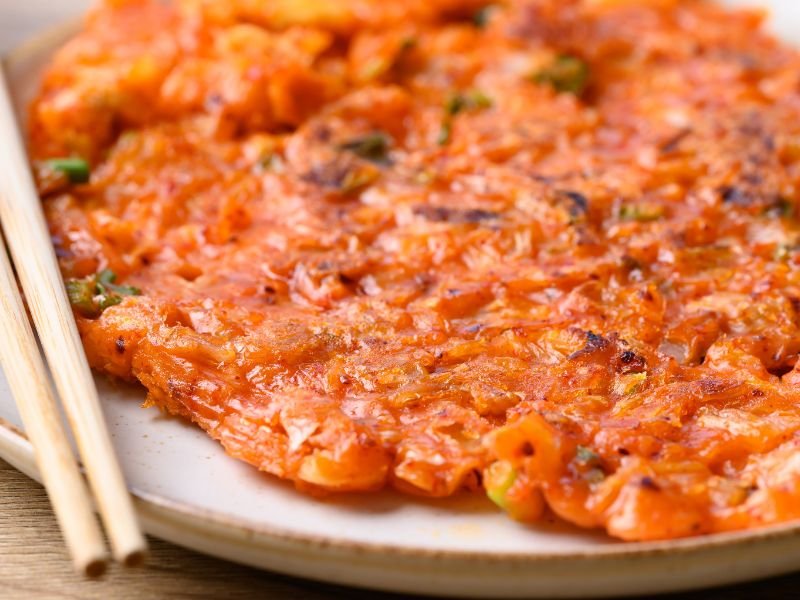
What To Eat and Drink in Cheongju, South Korea
Savor Cheongju’s Signature Drink: Cheongju Makgeolli
Makgeolli, a traditional Korean rice wine, holds a special place in Cheongju’s culinary scene. The city is renowned for its high-quality Cheongju Makgeolli, which is smoother and has a more refined taste compared to other regions.
- Local Specialty: Cheongju’s version is often brewed using pure water from nearby mountains and high-grade rice, resulting in a richer flavor profile.
- Pairings: Makgeolli pairs excellently with jeon (savory pancakes) like pajeon (green onion pancake) or kimchi jeon. The slight sweetness and acidity of the drink complement the savory, oily texture of the pancakes.
- Cultural Experience: Visit traditional Makgeolli houses or jip (집) where the ambiance is cozy, and patrons sit on floor mats around low tables, fostering a communal atmosphere.
Tip: Makgeolli is traditionally served in a dongdongju bowl with a ladle. Embrace the experience by sharing with your group and following local customs, such as pouring for others before yourself!
Indulge in Hearty Korean Barbecue
Cheongju boasts an array of Korean barbecue restaurants where you can immerse yourself in one of Korea’s most beloved dining experiences.
- Interactive Dining: Select from various cuts of meat like samgyeopsal (pork belly), galbi (marinated beef short ribs), or dak-galbi (spicy stir-fried chicken). Grill them at your table while engaging in conversation.
- Variety of Sides: Enjoy a plethora of banchan (side dishes) including kimchi, pickled radish, and seasoned spinach, which are replenished throughout your meal.
- Local Flavors: Some establishments offer Cheongju-specific marinades using local ingredients or house-special sauces that add a unique twist to the traditional barbecue.
Tip: Don’t miss trying ssam—wrap grilled meat in lettuce or perilla leaves along with rice, garlic, and ssamjang (a spicy paste). This creates a flavorful bite that’s both satisfying and representative of Korean culinary traditions!
Explore Street Food at Yukgeori Market
Yukgeori Market, with over 700 shops and stalls, is a sensory feast offering a wide array of street foods and local produce.
- Must-Try Snacks:
- Tteokbokki: Spicy rice cakes simmered in a red pepper sauce, often accompanied by eomuk (fish cakes).
- Hotteok: Sweet pancakes filled with a mixture of brown sugar, cinnamon, and chopped nuts, crispy on the outside and gooey inside.
- Gimbap: Rice rolls wrapped in seaweed and stuffed with ingredients like vegetables, egg, and ham—perfect for a quick, satisfying meal.
- Fresh Produce: Browse stalls brimming with seasonal fruits, vegetables, and specialty items like Cheongju apples, known for their crisp texture and sweetness.
- Cultural Immersion: Interact with friendly vendors eager to share stories about their products. The market is a microcosm of daily life, reflecting the community’s heartbeat.
Tip: Visit the market in the morning to experience it at its most vibrant. Bring cash in small denominations, as many vendors may not accept credit cards. Don’t be shy to haggle politely for the best deals!
Delight in Cheongju’s Specialty: Omegi Tteok
Omegi Tteok is a traditional rice cake unique to the Cheongju region, made from glutinous rice and often filled with sweet red bean paste.
- Authentic Taste: The rice cakes are steamed and coated with various toppings like kinako (roasted soybean powder), sesame seeds, or dried mugwort, offering a chewy texture and subtle sweetness.
- Cultural Significance: Often enjoyed during festivals or special occasions, Omegi Tteok represents communal harmony and celebration.
- Where to Find It: Local bakeries and traditional markets often sell fresh Omegi Tteok. It’s a delightful snack or dessert that offers a taste of Cheongju’s culinary heritage.
Tip: Pair Omegi Tteok with a cup of traditional tea like omija-cha (five-flavor berry tea) for a harmonious blend of flavors that soothe the palate!
Sip on Traditional Beverages
Beyond Makgeolli, Cheongju offers a variety of traditional beverages that complement the local cuisine.
- Soju: A clear distilled spirit, soju is Korea’s most popular liquor. Try premium soju brands from the region, which are smoother and have nuanced flavors.
- Sikhye: A sweet rice punch made from fermented malt and rice grains, often served as a dessert beverage.
- Omija-cha: A tea made from the omija berry, known for its five distinct flavors—sweet, sour, bitter, salty, and spicy.
Tip: When drinking alcohol in Korea, it’s customary to pour for others rather than oneself. Use both hands when pouring or receiving a drink to show respect. Embrace these customs to enhance your cultural experience!
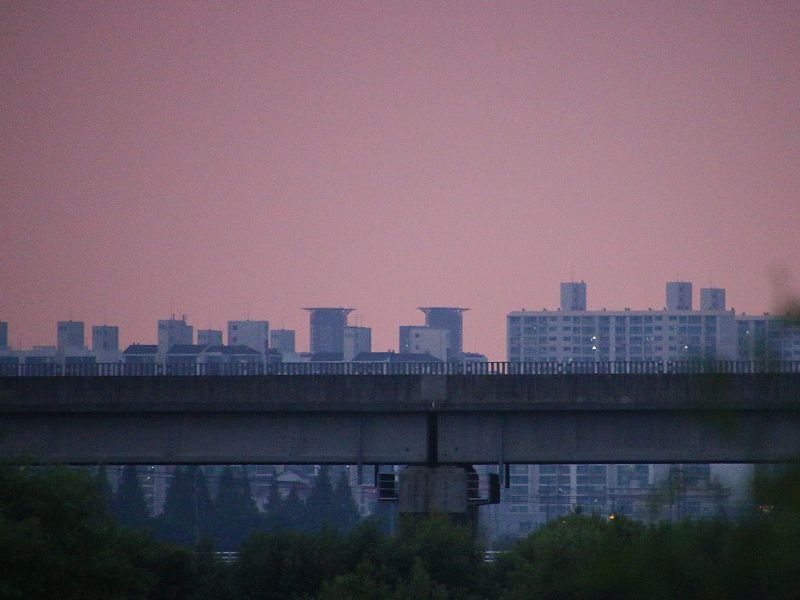
Tours For Visitors To Cheongju, Korea
Join a Historical Walking Tour
Unveil the layers of Cheongju’s rich past by embarking on a historical walking tour led by knowledgeable guides.
- In-Depth Knowledge: Guides often share anecdotes, legends, and lesser-known facts about sites like the Early Printing Museum, Heungdeok Temple Site, and Sangdang Sanseong Fortress.
- Efficient Exploration: Cover multiple landmarks within a structured timeframe, maximizing your visit without feeling rushed.
- Cultural Insight: Learn about Confucian traditions, architectural styles, and historical events that shaped the city.
Tip: Wear comfortable walking shoes and dress appropriately for the weather. Check if the tour includes admission fees to certain sites and whether meals or refreshments are provided. Some tours offer hotel pick-up for added convenience!
Participate in a Makgeolli Brewing Workshop
Deepen your appreciation for Korean traditions by joining a Makgeolli brewing workshop.
- Hands-On Experience: Under the guidance of a master brewer, learn the meticulous process of fermenting rice to create this beloved beverage.
- Cultural Education: Discover the historical significance of Makgeolli in Korean society, including its role in rituals and communal gatherings.
- Take-Home Souvenir: At the end of the session, bottle your own Makgeolli to enjoy later or share with friends.
Tip: Workshops may last several hours, as fermentation processes are involved. Wear comfortable clothing and be prepared to get involved in every step. Booking in advance is essential due to limited spots and high demand!
Explore Nature with a Hiking Tour
For outdoor enthusiasts, a guided hiking tour offers an invigorating way to experience Cheongju’s natural landscapes.
- Safety and Convenience: Experienced guides ensure you navigate trails safely, providing assistance and first-aid if necessary.
- Educational Aspect: Learn about local flora and fauna, ecological conservation efforts, and geological formations unique to the region.
- Spectacular Views: Reach summits or viewpoints that offer breathtaking panoramas, perfect for photography and relaxation.
Tip: Inform the tour operator of your fitness level to select a suitable trail. Bring essentials like water, snacks, sunscreen, and insect repellent. Some tours may include additional activities like bird watching or meditation sessions!
Take a Korean Cuisine Cooking Class
Dive into the culinary arts by participating in a Korean cooking class focusing on Cheongju’s regional specialties.
- Hands-On Learning: Prepare dishes under the guidance of professional chefs, learning techniques and recipes passed down through generations.
- Cultural Immersion: Understand the philosophy behind Korean cuisine, such as the importance of balance, harmony, and seasonal ingredients.
- Enjoy Your Creations: After cooking, sit down to enjoy the meal you’ve prepared, often accompanied by stories and cultural explanations.
Tip: Classes may accommodate different dietary restrictions, but it’s best to inform the organizers in advance. Take notes or ask for recipe sheets so you can recreate the dishes at home!
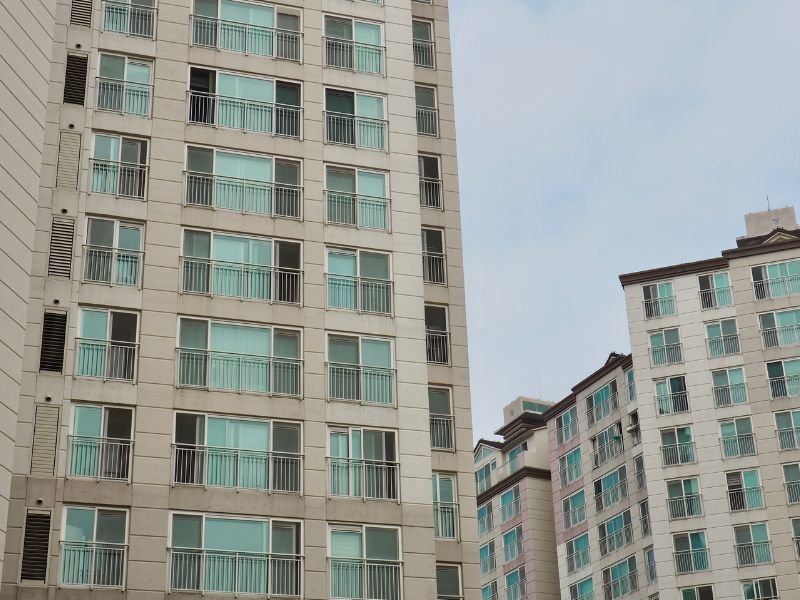
Cheongju Accommodations Guide: Hotels, Guesthouses, and Hostels
Luxury Hotels for a Comfortable Stay
Indulge in comfort and top-tier amenities at Cheongju’s luxury hotels, which cater to discerning travelers seeking convenience and elegance.
- Grand Plaza Cheongju Hotel:
- Features: Spacious rooms with city views, a state-of-the-art fitness center, indoor swimming pool, and multiple dining options including international cuisine.
- Location: Centrally located near shopping districts and cultural attractions.
- Services: Concierge assistance, room service, and business facilities.
- Hotel Lacky Cheongju:
- Features: Modern design with minimalist aesthetics, offering a rooftop garden, stylish bar, and comfortable lounges.
- Amenities: Free Wi-Fi, laundry services, and in-room entertainment systems.
- Dining: On-site restaurants serving fusion dishes and local specialties.
- Gallery Tourist Hotel:
- Unique Aspect: Art-themed decor featuring works by local artists, creating an immersive cultural experience.
- Facilities: Conference rooms, café, and art galleries within the hotel.
- Location: Proximity to the Cheongju Arts Center and other cultural venues.
Tip: For the best rates, consider booking during off-peak seasons. Joining the hotel’s membership program or subscribing to newsletters may grant you access to exclusive discounts and packages!
Experience Local Hospitality in Guesthouses
For travelers seeking a homely atmosphere and cultural authenticity, Cheongju’s guesthouses offer warm hospitality.
- Cheongju The Rest Guesthouse:
- Accommodations: Cozy rooms with traditional Korean decor, including options for ondol (heated floor) sleeping arrangements.
- Amenities: Communal kitchen, shared lounge, and complimentary breakfast featuring local ingredients.
- Host Interaction: Friendly hosts often provide personalized recommendations and may even offer guided walks.
- Happy Guesthouse:
- Features: Clean, comfortable rooms with modern conveniences, located within walking distance of major attractions.
- Community: Opportunities to meet fellow travelers in common areas, fostering a sense of camaraderie.
- Extras: Laundry facilities, bike rentals, and occasional cultural events hosted on-site.
- Healing House:
- Unique Selling Point: Emphasis on wellness, offering meditation spaces, herbal teas, and a tranquil garden for relaxation.
- Rooms: Blend of traditional and modern design, providing a serene environment.
- Services: Massage therapies and yoga classes may be available upon request.
Tip: Guesthouses are popular and may have limited availability, especially during festivals or holidays. Book well in advance and communicate any specific needs to your host for a comfortable stay!
Budget-Friendly Hostels for Travelers
Backpackers and budget-conscious travelers will find Cheongju’s hostels offer affordable accommodation without compromising on quality.
- Cheongju Coco Hotel:
- Accommodations: Dormitory-style rooms and private rooms, all well-maintained and clean.
- Facilities: Free Wi-Fi, shared kitchen, and common lounge area with games and books.
- Convenience: Located near public transportation hubs, making it easy to explore the city.
- M-Stay Hotel:
- Features: Simple yet comfortable rooms with essential amenities like air conditioning and en-suite bathrooms.
- Services: 24-hour front desk, luggage storage, and optional breakfast service.
- Value: Offers competitive rates without hidden fees.
- Cheongju Chocolate Motel:
- Unique Decor: Themed rooms with quirky designs, adding a fun element to your stay.
- Amenities: Free toiletries, mini-fridge, and complimentary snacks.
- Location: Close to shopping districts and nightlife, ideal for those looking to experience the city’s vibrant side.
Tip: Read recent reviews and check ratings on reputable booking platforms to ensure the hostel meets your expectations. Inquire about any curfews or house rules, especially if you plan to explore the nightlife!
source: VisitKorea on YouTube
Day Trips From Cheongju, South Korea
Visit Beopjusa Temple in Songnisan National Park
Approximately 65 kilometers from Cheongju, the Beopjusa Temple is nestled within the majestic Songnisan National Park. Established in 553 AD, the temple is a UNESCO World Heritage site and houses numerous national treasures.
- Cultural Heritage:
- Golden Maitreya Statue: Standing at 33 meters, it’s one of the tallest Buddha statues in Korea, symbolizing peace and prosperity.
- Palsangjeon: A five-story wooden pagoda, one of the few remaining from the Joseon Dynasty, showcasing intricate architectural craftsmanship.
- Natural Beauty:
- Hiking Trails: Ranging from leisurely walks to challenging climbs, trails offer breathtaking views of forests, streams, and unique rock formations.
- Flora and Fauna: The park is home to diverse wildlife and over 1,000 plant species, making it a paradise for nature enthusiasts.
- Temple Stay Programs:
- Monastic Life: Participate in meditation sessions, tea ceremonies, and communal meals to experience the serene life of Buddhist monks.
- Cultural Activities: Learn Seon (Zen) meditation, 108 prostrations, and traditional Buddhist rituals.
Tip: Dress modestly when visiting the temple, covering shoulders and knees out of respect. Temple stay programs require advance booking and adherence to specific schedules, so plan accordingly. Remember to bring comfortable shoes for hiking and exploring the vast grounds!
Explore Danyang’s Scenic Spots
A two-hour drive east of Cheongju brings you to Danyang, a town renowned for its stunning natural attractions.
- Gosu Cave:
- Description: An extensive limestone cave over 1,700 meters long, featuring stalactites, stalagmites, and subterranean waterfalls.
- Experience: Walk along well-lit pathways and marvel at formations like the Lion’s Head and Octopus Tentacles.
- Mancheonha Skywalk:
- Thrill Factor: Step onto a glass-bottomed bridge extending over a 100-meter cliff, offering exhilarating views of the Namhangang River.
- Photo Opportunities: Capture panoramic shots of the surrounding mountains and river valleys.
- Dodamsambong Peaks:
- Legend: Three iconic rock formations rising from the river, associated with a local folklore tale of a husband, wife, and mistress.
- Activities: Take a leisurely boat tour to get up-close views or enjoy the scenery from nearby pavilions.
Tip: Start your day early to maximize your time, as there are several attractions to cover. Wear comfortable clothing suitable for cave exploration and outdoor activities. Check weather conditions, as some attractions may close during adverse weather!
Discover Andong Hahoe Folk Village
Located about 150 kilometers southeast of Cheongju, the Andong Hahoe Folk Village offers an immersive journey into Korea’s past.
- Historical Experience:
- Preservation: The village maintains its Joseon Dynasty architecture, with over 130 traditional houses still inhabited by descendants.
- UNESCO Recognition: Acknowledged for its cultural value, the village showcases Korea’s clan-based society and Confucian traditions.
- Cultural Performances:
- Mask Dance Drama (Hahoe Byeolsingut Tallori): Witness performances that combine satire, humor, and shamanistic rituals, often held on weekends.
- Craft Demonstrations: Observe artisans practicing traditional crafts like mask carving, pottery, and papermaking.
- Natural Surroundings:
- Nakdong River: The village is encircled by the river, providing picturesque landscapes ideal for leisurely walks or boat rides.
- Buyongdae Cliff: Hike to this vantage point for panoramic views of the entire village and surrounding countryside.
Tip: Allocate a full day for this trip due to travel time. Guided tours are available and highly recommended to gain deeper insights into the village’s history and customs. Wear comfortable shoes, as the village has uneven pathways. Don’t forget to try the local specialty, Andong soju, known for its strong flavor!
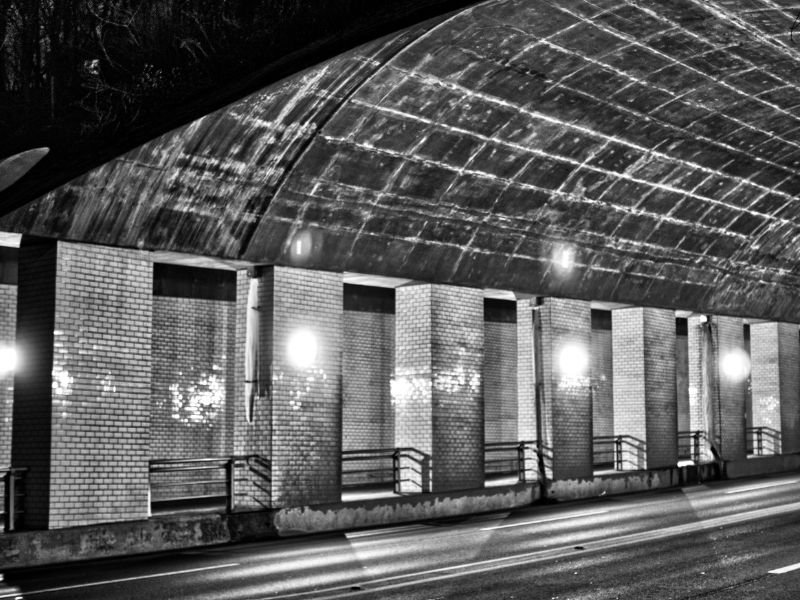
Cheongju Transportation Guide
Getting to Cheongju
Cheongju is well-connected and easily accessible from various parts of South Korea, making it a convenient destination for both domestic and international travelers.
By Train:
- KTX (Korea Train Express):
- Route: The high-speed KTX connects Seoul to Osong Station, which is about 15 kilometers from Cheongju.
- Duration: The journey from Seoul to Osong takes approximately 50 minutes.
- Transfer: From Osong Station, you can take a local bus or taxi to Cheongju city center.
- Mugunghwa and Saemaeul Trains:
- Alternative Options: Slower but more economical trains connect Seoul directly to Cheongju Station.
- Duration: Approximately 2 to 2.5 hours.
Via Bus:
- Express Buses:
- Terminals: Buses depart from Seoul’s Express Bus Terminal or Dong Seoul Bus Terminal to Cheongju Express Bus Terminal.
- Frequency: Buses run frequently throughout the day.
- Duration: The journey takes about 1 hour and 40 minutes.
- Intercity Buses:
- Connectivity: Direct buses from major cities like Busan, Daegu, and Gwangju.
By Air:
- Cheongju International Airport:
- Domestic Flights: Regular flights from Jeju Island and other domestic locations.
- International Flights: Limited routes to China, Taiwan, and Southeast Asia.
- Distance to City Center: Approximately 10 kilometers, accessible by taxi or airport limousine buses.
Tip: Use transportation apps like Korail Talk for train schedules and bookings, or Express Bus app for bus timetables. Booking tickets in advance, especially during peak seasons or holidays, ensures a smoother journey!
Navigating Within Cheongju
Public Transportation:
- Buses:
- Coverage: An extensive network covering most parts of the city and outskirts.
- Payment: Use a T-money card for convenient payment and transfers. Cards can be purchased and recharged at convenience stores or subway stations.
- Information: Bus stops display routes, but information may be primarily in Korean. Bus numbers and destinations are typically shown in English numerals.
- Taxis:
- Availability: Readily available, especially in downtown areas, bus terminals, and tourist spots.
- Fares: Reasonably priced, with metered rates. Extra charges may apply late at night.
- Communication: Having your destination written in Korean can be helpful. Taxi apps like Kakao Taxi allow you to input destinations and request rides.
Rental Services:
- Rental Cars:
- Requirements: International Driving Permit (IDP) required for foreigners.
- Providers: Available at airports and major train stations.
- Navigation: GPS systems often have English options.
- Rental Bikes and E-Scooters:
- Bike-Sharing Programs: Some areas offer public bike rentals accessible via apps.
- E-Scooters: Available through apps like Kickgoing or Lime in certain districts.
Tip: Download navigation apps like KakaoMap or Naver Map, which offer English language support and real-time transit information. These apps are more reliable in Korea than global counterparts like Google Maps!
Transportation Tips for Tourists
- Use Apps:
- Translation Apps: Tools like Papago or Google Translate can assist in communication and reading signs.
- Transportation Apps: Subway Korea or BusApp provide route planning and schedules.
- Carry Cash:
- Small Bills and Coins: Useful for buses, small vendors, and markets where cards may not be accepted.
- ATMs: Look for “Global” or “International” signs to withdraw cash with foreign cards.
- Learn Basic Korean Phrases:
- Greetings: “Annyeonghaseyo” (Hello), “Gamsahamnida” (Thank you).
- Directions: “Eodi-eyo?” (Where is…?), “Juseyo” (Please).
Tip: Always keep your accommodation’s business card or address written in Korean. In case you get lost, showing this to a taxi driver or local can help you return safely. Consider purchasing a local SIM card or renting a portable Wi-Fi device at the airport for constant internet access, which is invaluable for navigation and communication!
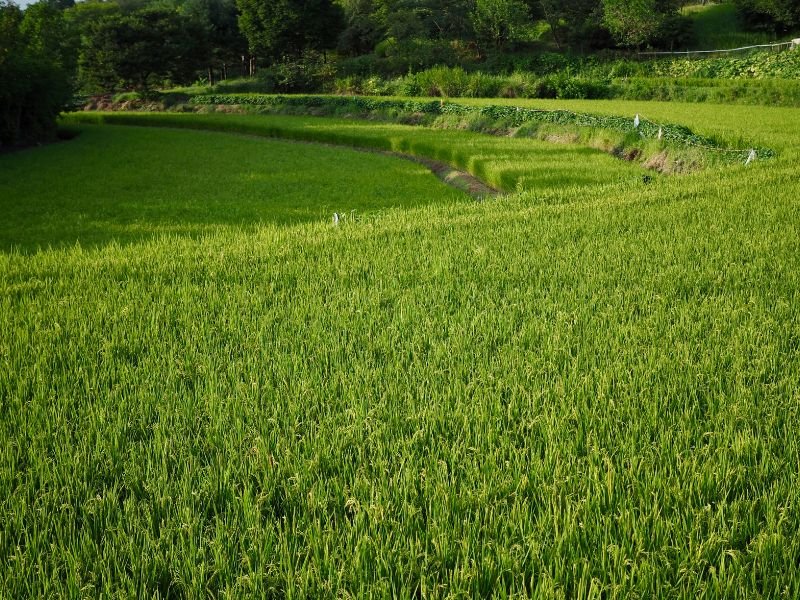
Essential Cheongju Travel Questions: Practical Answers, Day-Trip Ideas & Local Tips for First-Time Visitors
Is Cheongju worth visiting if I’m already planning Seoul?
Absolutely. Cheongju feels like a refresh button from the capital—still easy to reach, but with a more local rhythm. You get meaningful history (hello, Jikji), mountain fortress hikes, markets, and a surprisingly fun food-and-makgeolli scene without the big-city intensity.
If you like layering in one or two smaller Korean cities to balance your itinerary, Cheongju is a smart, low-stress pick.
How many days should I stay in Cheongju?
It depends. A well-paced 1 full day covers the Early Printing Museum, a market meal, a stroll along Musimcheon, and a cultural stop like the National Museum.
For a deeper, more relaxed visit, plan 2 days so you can add Sangdang Sanseong Fortress, Suamgol murals, and either Cheongnamdae or a Daecheong Lake outing without rushing.
What’s the best time of year to visit Cheongju?
Yes—spring and autumn really are the sweet spots. Expect comfortable walking temperatures, clearer skies, and scenery that levels up your photos whether you’re hiking the fortress or wandering the mural village.
Summer can be hot and humid, and winter is quieter but chilly—still doable if museums, cafés, and food-hunting are your main goals.
What’s the easiest way to get to Cheongju from Seoul?
The simplest route for most travelers is KTX to Osong Station, then a short local transfer into the city. It’s fast and smooth, especially if you want to minimize travel friction.
Buses are also straightforward and often budget-friendly, so if you’re watching costs, that’s a solid Plan B.
Should I base myself near downtown or closer to Daecheong Lake?
Downtown is usually the better base for first-timers. You’ll be closer to markets, restaurants, museums, and easy bus connections to the major sights.
Daecheong Lake is lovely, but I’d treat it more like a half-day or day excursion unless you specifically want a quieter, nature-forward stay.
What are the absolute must-do experiences for a first visit?
Not really a trick question—Cheongju has a clear “starter pack.” I’d prioritize:
- Cheongju Early Printing Museum + Heungdeok Temple Site for the Jikji story.
- Sangdang Sanseong Fortress for the best history-meets-hiking combo.
- Yukgeori Market for real-life local flavor and snack breaks.
- Suamgol Village for murals and a slower neighborhood vibe.
That quartet gives you a strong first impression of the city’s identity.
Is Sangdang Sanseong Fortress a tough hike?
Not really. You can make it as easy or as ambitious as you want. The trails and walls allow for short scenic walks or longer loops if you’re feeling energetic.
I’d bring comfortable shoes and water, then pace it with photo stops. The views are the reward, especially in softer morning or late-afternoon light.
What makes Cheongju special compared to other Korean cities?
Cheongju’s claim to fame isn’t just that it’s pleasant—it’s historically significant in a way that’s easy to understand and genuinely cool. The Jikji connection gives the city a global cultural hook, and the blend of heritage sites with modern creative spaces (like the Art Studio) keeps things from feeling purely “museum-like.”
It’s one of those places where you can feel Korea’s timeline in a single weekend.
Where should I go for the best food and local atmosphere?
Yes. Start with Yukgeori Market for a proper local pulse—this is where you’ll find casual meals, snacks, and everyday Cheongju life in motion.
Then keep an eye out for makgeolli spots and grilled meat restaurants. The city’s food scene is approachable, hearty, and perfect for travelers who like to eat their way through a destination.
Is Cheongju good for families traveling with kids?
Absolutely. The city is manageable and less overwhelming than bigger hubs, and spots like museums, riverside walks, and open park areas make it easier to keep a family day flowing.
If you’re traveling with a stroller, prioritize flatter areas first, then save steeper neighborhoods like Suamgol for a time when everyone’s energy is high.
Is Cheongju accessible for travelers with limited mobility?
It depends. Major museums and modern areas are generally easier to navigate, with smoother pathways and more predictable facilities.
Older historical sites or hillside neighborhoods can be trickier due to slopes, stairs, and uneven surfaces. A good strategy is to build your days around one “easy access” anchor (like the National Museum) and then add optional stops based on comfort.
What’s a realistic daily budget for Cheongju?
Not really expensive by Korea standards. A mid-range traveler can do well on roughly ₩70,000–₩140,000 per day depending on accommodation style, meals, and how often you use taxis.
Budget travelers can go lower with simple guesthouses and market meals, while splurge days might include nicer hotels, barbecue feasts, and extra day-trip transport.
Are there any local etiquette tips I should know?
Yes. The basics of Korean courtesy go a long way here: use two hands when receiving drinks or items if you’re in a more formal setting, speak softly in quieter spaces, and be mindful when photographing residential areas—especially in places like Suamgol.
If you’re visiting makgeolli houses, the shared, social vibe is part of the experience. Relax into it and follow the tone of the room.
What are the best day trips from Cheongju?
Absolutely. Cheongju is positioned perfectly for easy expansions. The standout options are:
- Beopjusa Temple in Songnisan National Park if you want a spiritual-and-scenic classic.
- Danyang for dramatic landscapes, caves, and viewpoint thrills.
- Andong Hahoe Folk Village if you’re craving deeper cultural history and a UNESCO-level atmosphere.
Even choosing just one of these can turn a Cheongju base into a richer central-Korea itinerary.
Cheongju Travel Guide: Final Thoughts
From ancient temples and museums that tell the tales of the past to modern art studios and bustling markets that showcase the city’s contemporary spirit, there’s an abundance of things to do in Cheongju for every traveler.
Whether you’re savoring local delicacies, exploring scenic landscapes, or immersing yourself in cultural experiences, Cheongju offers a unique and authentic Korean adventure. The city’s warm hospitality and diverse attractions make it a destination that leaves a lasting impression.
- Diverse Attractions: Catering to history buffs, nature lovers, and urban explorers.
- Cultural Immersion: Opportunities to engage deeply with Korean traditions.
- Memorable Experiences: From sipping Makgeolli to hiking ancient fortress walls.
Tip: Keep an open mind and heart, and you’ll find that Cheongju reveals its charms in the most delightful ways, ensuring an unforgettable journey!
